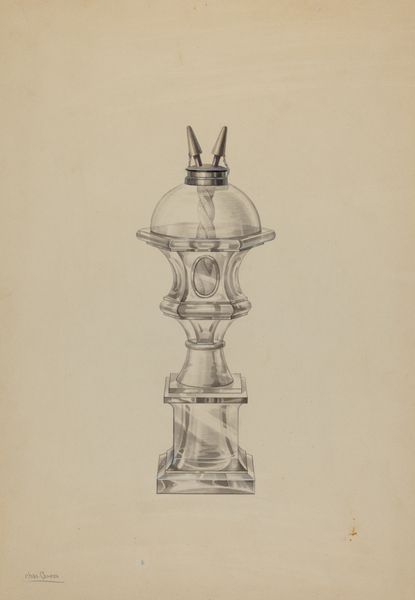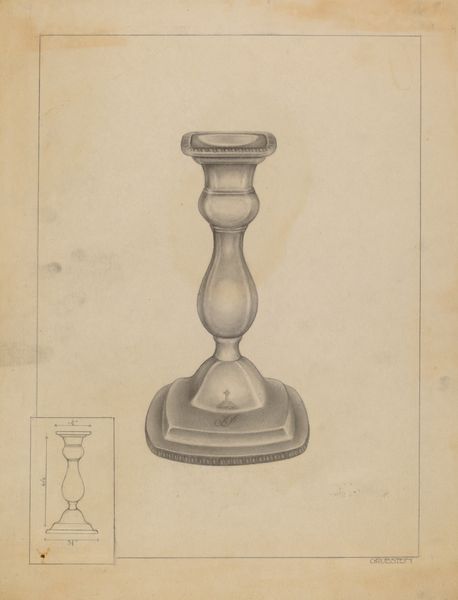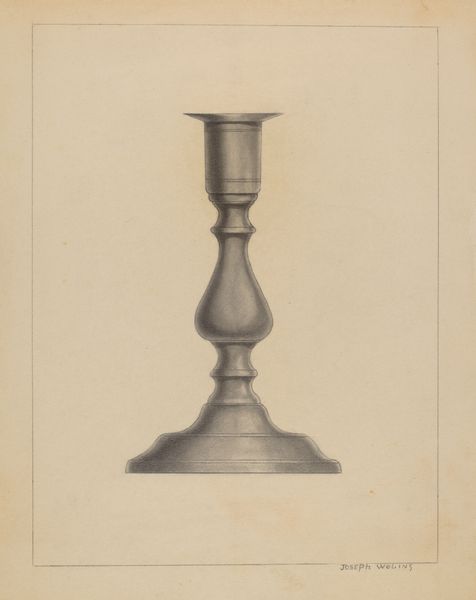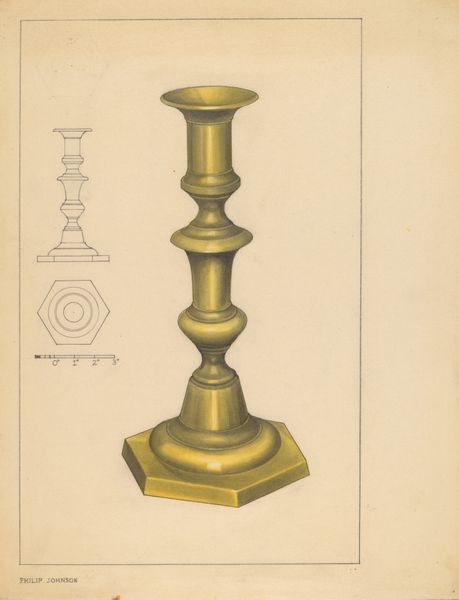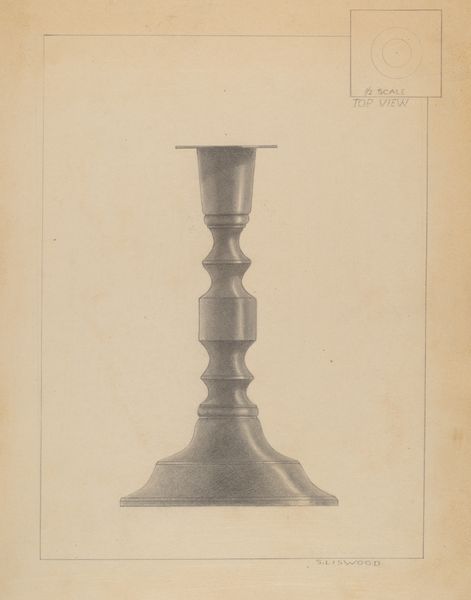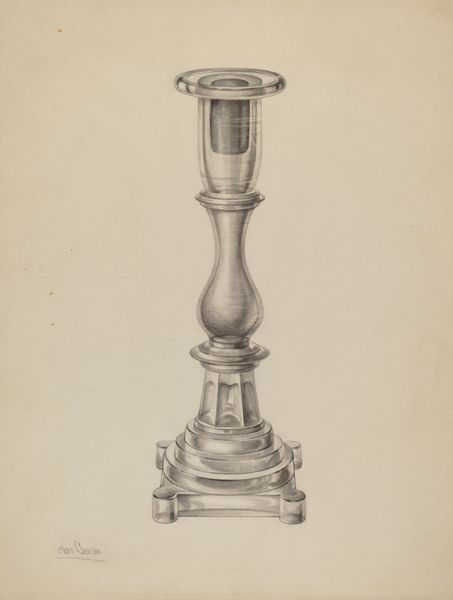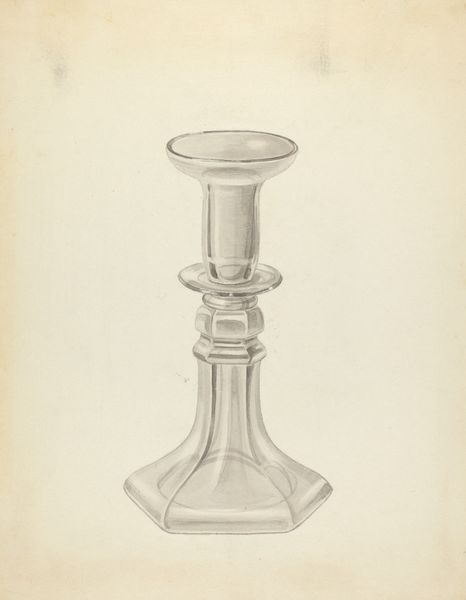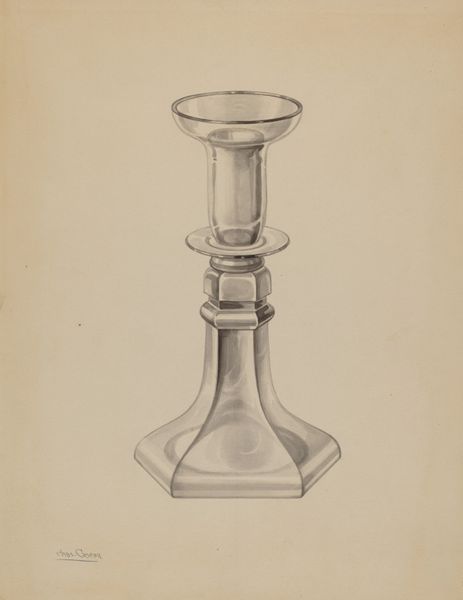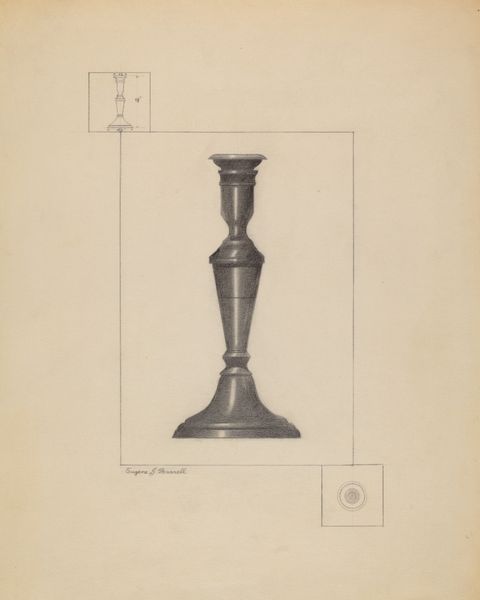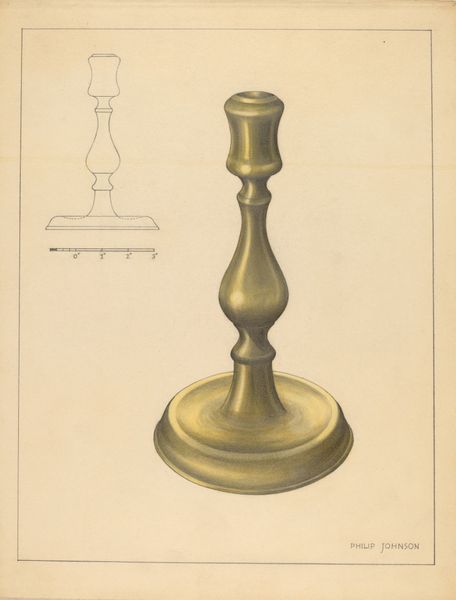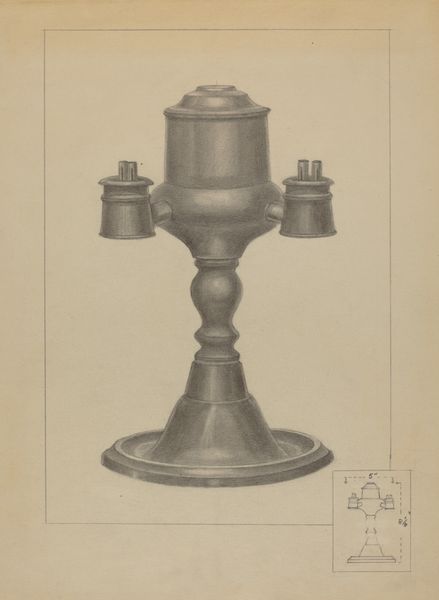
drawing, pencil
#
drawing
#
geometric
#
pencil
#
realism
Dimensions: overall: 30.6 x 23 cm (12 1/16 x 9 1/16 in.) Original IAD Object: 10" high; 4 3/4" wide
Copyright: National Gallery of Art: CC0 1.0
Editor: This is Henry Meyer's pencil drawing "Candlestick," created sometime between 1935 and 1942. It strikes me as quite technical, like an architect's blueprint more than a traditional still life. What can you tell me about this work? Curator: Well, let's consider the time it was made: the late 1930s, early 1940s. Globally, it was a period defined by upheaval. So what artistic conventions or roles are being subtly questioned or affirmed here? What public needs might such a carefully rendered technical drawing of a candlestick fulfill? Editor: That’s interesting. So you’re suggesting that even a seemingly simple object like a candlestick drawing can have social relevance? Curator: Absolutely. Look at the precision of the lines and the detailed measurements included below. In the context of economic hardship and looming war, perhaps Meyer's drawing embodies a desire for order, stability, and maybe even the functional elegance of everyday objects in contrast to a world descending into chaos. Do you think the candlestick becomes a symbol, then? Editor: It could be a symbol for home and hearth, maybe? Something familiar to hold onto? Given the political climate at the time, the precision also gives the piece an official, government-issued type of vibe to me. Almost bureaucratic. Curator: Precisely. Bureaucracy isn't known for being emotionally charged. But if Meyer made something that had utility, in a functional or even documentary manner, it meant something. This also makes me wonder how such items came into the museum's collection to begin with, who thought they had significance. Editor: I hadn’t thought about it that way. It really puts the piece in a new light. I will never look at still life drawings the same way!
Comments
No comments
Be the first to comment and join the conversation on the ultimate creative platform.

